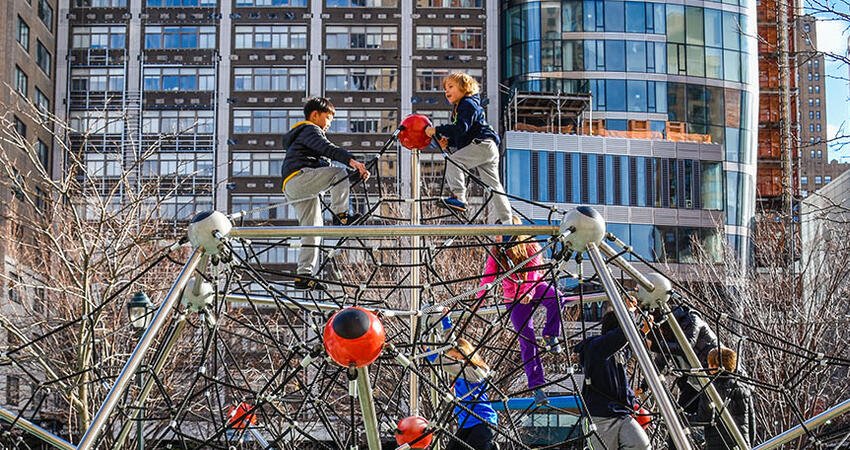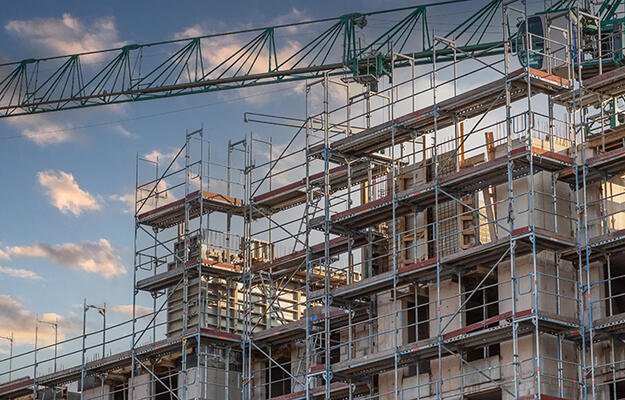
No One Left Behind: How Placemaking Can Promote Equitable Development
by Janae Ladet and Kimberly Burrowes
"Equitable growth for a community means that residents grow alongside it and that the community continues to grow because of its residents. The growth comes from within the community, and the residents who have participated in its history and culture not only benefit from that growth but help to make it happen." — Eureka Gilkey, executive director, Project Row Houses
Researchers and planners remind us that placemaking is all about the “making.” It is a collaborative and ongoing process. From building vibrant play areas for neighborhood kids, to using street art to reclaim public space, place-based projects can boost development for cities and neighborhoods. Placemaking empowers communities to tap into arts and local culture to express a space’s identity and acknowledge its historical and social value. Placemaking also demonstrates that through strategic and creative interventions, underused areas once associated with disinvestment and isolation can become places for people and activities. As people become attracted to a place, so too do economic opportunities. When done effectively, placemaking can leverage local assets to foster healthy, culturally rich, and thriving spaces. But as areas improve through placemaking initiatives, there is a thin line between economic prosperity and growth and residential displacement.
How can planners, policymakers, and designers ensure community residents benefit equitably from placemaking activities?
Communities are dynamic, so placed-based initiatives should respond to a neighborhood’s needs and potential. Placemaking can encourage transformative change, particularly in low-income or distressed neighborhoods, and can help the community regain market strength and stimulate economic growth to spaces that previously received little attention and economic activity.
Among new economic growth from placemaking activities, it is important that longtime residents benefit from the value-add of new art- and culture-based revitalization and are not displaced in the planning and design processes. Equitable development planning principles can help. The 11th Street Bridge Park in Washington, DC, includes a comprehensive equitable development plan to ensure shared benefits with longtime residents. The plan includes strategies for workforce development, small businesses, and affordable housing. Once the bridge is complete, it will connect high-income Capitol Hill communities to low-income Anacostia neighborhoods on the east bank. A report on equitable development and culture from PolicyLink notes, “Without equity, community redevelopment can improve a physical place but leave the people behind, stifle broad creativity, bring economic benefit only to a few, lead to a homogeneous community, or displace many.” When placemaking efforts include equitable development principles, neighborhoods and cities can remain vibrant and inclusive.
Neighborhoods can change because of economic growth, and there is the threat of altering the neighborhood’s identity or excluding groups. But with equitable placemaking methods and processes, there are ways to circumvent the negative outcomes of gentrification. A Michigan State University guidebook discusses the following approaches for equitable placemaking:
- Taking inventory of buildings and amenities in an area targeted for redevelopment
- Encouraging economic diversity through mixed-income developments
- Communicating affordable housing opportunities to current residents and business owners
- Increasing awareness of public assistance opportunities for residents and business owners throughout redevelopment
These strategies point to the importance of engaging the community early on and before people get displaced.
Affordable housing as a strategy
When planning processes include local artists and residents and redevelopment plans reflect an area’s culture and history, displacement is less likely to occur. Several organizations practice placemaking with an emphasis on community engagement, inclusion, and equitable outcomes. One example is Project Row Houses in Houston’s Third Ward. The organization works at the intersection of art and community development.
Displacement and gentrification are about more than housing. Specific groups and longtime residents must be supported and empowered. Project Row Houses saw a need to support single mothers through the Young Mothers Residential Program, which provides housing and other social services to single mothers. Tamika Evans, director of strategic partnerships at Project Row Houses, noted the following: “We learned that there were single mothers in our neighborhood who needed not only housing but a safe space for them and their children to grow—as individuals and as a family…. Through YMRP, we help to foster both independence and interdependence because being part of a community means that you have someone to lean on and that you’re there for others. Women from the program have gone on to pursue doctorates and law degrees or become business owners and community leaders, and some of the greatest success stories are still being told.”
An essential part of Project Row Houses’ programming is to stabilize affordable housing, and in 2003, the organization created a community development corporation, Row House CDC, as a sister organization that provides on low-to-moderate-income rental units with an affordable housing program. Project Row Houses’ executive director, Eureka Gilkey, said, “Our affordable housing program grew out of YMRP when graduates wanted to stay in the Third Ward but were unable to find sustainable options. Ultimately, our desire to build affordable housing led to the creation of our sister organization, Row House CDC, and they have gone on to expand the number of apartments available to the community all at a sliding scale. Today, RHCDC is composed of 28 structures, which have provided permanent affordable housing for 56 families within the Third Ward and is now an independent entity.” Project Row Houses has preserved affordable housing with architecturally relevant design to honor the ward’s historic shotgun homes.
Project Row Houses is an excellent example of a platform practicing equitable development while lifting the legacy of the community and supporting longtime residents. Beyond preserving and creating affordable housing, it has organized community members to address the gentrification facing northern Third Ward. In 2015, the organization brought together faith institutions, nonprofit organizations, small-business owners, and residents to change the dialogue regarding redevelopment in the neighborhood. This effort, formerly known as the Emancipation Economic Development Council, has resulted in approximately $4 million in philanthropic funding focused on affordable housing, public policy initiatives, economic development, and arts-based community development implementation strategies.
Placemaking with equitable development principles at its core cannot be done without funding and financing strategies. Organizations have combined federal, local, and private sources to fund projects, including tax credits, the US Department of Housing and Urban Development’s HOME Investment Partnerships Program, Community Development Block Grant dollars, rental subsidies, and historic preservation programs. Organizations like the Local Initiatives Support Corporation have advocated for changes to the low-income housing tax credit program to build affordable housing that supports artists.
Placemaking planning efforts and activities can help transform a distressed or blighted neighborhood with new art and offers ways to reimage a space. At the same time, these actives can promote equity with conscientious development. These opportunities to transform neighborhoods through placemaking go beyond big cities. Small cities and towns can benefit from placemaking efforts to help achieve economic and population stability. As Project Row Houses demonstrates, intentional, forward-thinking planning and inclusive processes in placemaking can revive a space and provide positive and shared benefits for longtime residents.
This feature is made possible through contributions and quotes from Eureka Gilkey, executive director, and Tamika Evans, director of strategic partnerships, at Project Row Houses. We are grateful for their insights and valuable contributions.


